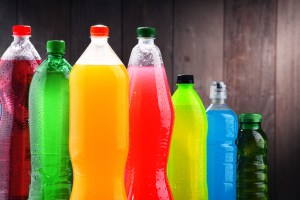Obesity in children and adolescents is an ongoing problem in the United States. Several major national and international organizations have concluded that added sugar in the diet is contributing to obesity and the health risks related to obesity. Children and teens report, on average, getting 17% of calories from added sugar, half of which comes from beverages like juice, soda and sports drinks. Consuming these beverages increases the risk of heart disease, high blood pressure, and diabetes. Because sugary beverages have limited to no nutrition, the American Academy of Pediatrics has concluded that reducing these beverages in the American diet will overall reduce sugar intake and improve health outcomes. While they have already made recommendations on reducing juice intake, the AAP is now recommending policy changes to further reduce consumption of sugary drinks.
Background
Dr. Natalie Muth, pediatrician at Children’s Primary Care Medical group and registered dietician, is the lead author on the AAP’s newest policy statement. She confirms that added sugar in a child’s diet is related to “serious health harms” and “sugary drinks are the #1 source of sugars” in their diets. As pediatricians, we always counsel parents and patients on consuming a healthy diet low in sugar and recently adopted the AAP’s policy on reducing or eliminating juice. However, “we need bigger picture changes-policy changes-to truly impact this issue.”
Dr. Muth compares the policy’s goals to the policies that reduced tobacco use in children. For example, the tobacco tax reduced tobacco use in adolescents. Similarly, “places that have implemented a sugary drink tax have lowered sugary drink consumption.”
The new policy recommendations
Awareness of our obesity problem is not new, yet we have not seen any meaningful decrease to reduce the rate of obesity. Therefore, the AAP is recommending several policy changes to help. The focus is primarily on the reduction of sugary drink consumption because, according to Dr. Muth, it “is the most impactful change a family can make to prevent obesity.” The main policy statement recommendations, which are evidence-based, are as follows:
Increase the price of sugary drinks, such as an excise tax. Use tax revenues to reduce health and socioeconomic disparities. This has shown to be effective in other countries and parts of the United States.
Government should support efforts to decrease sugary drink marketing to children and adolescents. Children are more likely to consume beverages they see advertised.
Nutrition assistance programs to encourage access to healthy food and discourage sugary drinks. This must be done in a way that does not stigmatize participants in the program, especially as some programs don’t have nutritional standards.
Readily accessible and credible nutrition information on labels, menus and in advertisements. This includes consumer education on how to read and use nutrition labels. Also, this may include front-of-package labels.
Policies that make healthy beverages the default. For example, promoting milk or water with kids’ meals or in vending machines.
Hospitals should serve as an example and limit or disincentivize purchase of sugary drinks. This improves the health of hospital employees, as well as raise awareness to the public about the risks of sugary drinks.
What about other lifestyle changes?
We know that the development of obesity is multi-factorial. Influences on the development of obesity include “overall nutrition, portion size, physical activity, sleep, screen time and stress”, according to Dr. Muth. However, when it comes to evidence for which factor most impacts health outcomes, sugar is the strongest. “Especially that from sugary drinks.” Therefore, to reduce the risk of harmful health outcomes, whether at a healthy weight or not, sugar reduction remains the most important thing parents can do.
What can parents do?
Dr. Muth suggests promoting water, along with teaching children how to spot savvy marketing of sugary drinks. Explain to them that you aren’t purchasing those beverages because the sugar hurts their health. For children who really don’t like water, she suggests “serving it really cold or infusing it with fruit or lemon. You can even offer unsweetened sparkling water.”
For parents wondering how they can help now, while waiting for policy changes to take place, avoid buying sugary drinks. Dr. Muth says, “sugary drinks include more than just juice, but also include soda, sports drinks, lemonade, Frappuccinos and sweetened coffee drinks.” Don’t forget about smoothies that seem healthy because they are made with fruit but in reality have a lot of added sugar. Children should only consume 25 grams of added sugar per day. Guess how much is in a 20 oz bottle of soda? 65 grams!
In general, parents need to be aware of all of the places their children get added sugar in their diet. Beverages may make up half of the sugar children consume, but sugar hides everywhere. As pediatricians, we recommend a diet high in fruits and vegetables and encourage water as the drink of choice.



